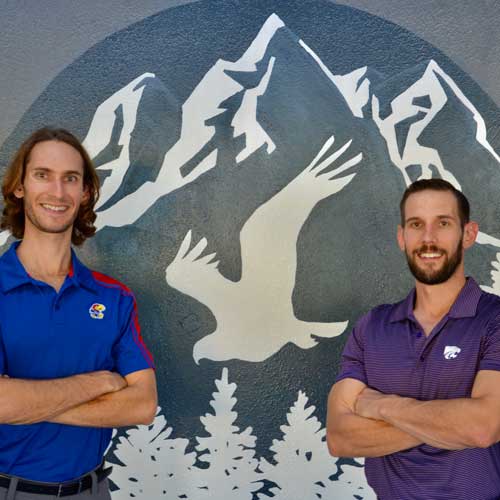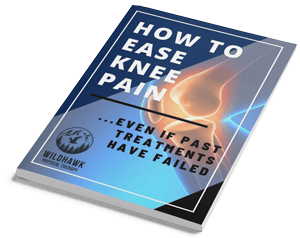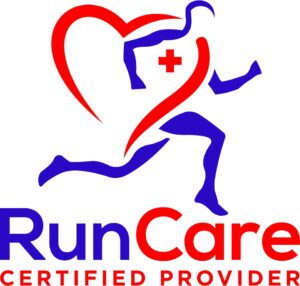At least 50% of regular runners get hurt each year. Several sources have estimated this number to be even bigger. Whether it’s the sprinter, marathon runner, ultra-marathon runner, trail runner or the average jogger, all of us are at risk for injury.
By no means am I saying stop running, on the contrary, keep running because the health benefits far outweigh the risks. Several health benefits include:
1. Improved bone health
2. Increased muscle strength
3. Improvements in cardiovascular fitness
4. Maintaining a healthy weight (or losing weight)
5. Improvements in sleep quality
6. Improvements in immune function
7. Improved cognition
8. Reduced risk for Alzheimer’s and cancer
9. Improved mental health and reduced depression
10. Reduction in risk for diabetes
11. Reduction in blood pressurue
The list goes on and on! The unfortunate reality is that runners have injuries. With running, the risk is present for spraining an ankle, overtraining or having a knee injury. This isn’t surprising with the variety of running surfaces including concrete, grass, hills, rocks, etc. However, many runners may experience pain during running without an obvious injury.
The question I often ask myself and my patients is how did this pain begin? The answer I commonly get is “I don’t know” or “The pain just gradually got worse over time”. If this describes you, you are not alone. In my experience as a physical therapist, I have found that there is usually a history of an injury that the person suffered in the past (even a very long ago injury big or small) or a muscle weakness that made that person more vulnerable to pain during running.
What Does The Research Say About Running?
Numerous research studies would suggest that previous history of injury is a risk factor for future running-related injuries. (3, 5, 6) These can be a wide variety of injuries from an ankle sprain, calf injury, knee, hip or even lower back injury! Our bodies adapt to an injury and begin compensating somewhere else. So it is not crazy to think that an old hip injury could be causing knee or ankle pain during running.
What is the Right Amount of Running?
A study on recreational runners shows that they had a lower occurrence of hip and knee arthritis compared with competitive runners and controls (non-runners). This may be an indication that sedentary behavior (sitting too much) or long exposure to high-volume running are associated with increased risk of arthritis. (1) However, I would challenge this evidence because it is difficult to say that high-volume running caused the arthritis. They could have had a previous injury that made them more at risk to compensate in their knee or hip and develop arthritis. Long story short, keep running! If you are running long distances and not having pain, you can and should continue if it is enjoyable to you.
Who Is Commonly At Risk?
The single most common issue I see with patients is weakness in their hip abductors. One research study shows hip abduction weakness may be associated with Iliotibial band syndrome in distance runners.
(4) Weakness in this muscle group often cause knee pain or even ankle/foot pain.
Wearing orthotics has been a risk factor for running injuries.
(6) This may mean that the person was wearing an orthotic because they were already having a problem before, or the orthotic isn’t the right fit for the person.
Increased weight, female sex, higher navicular drop and external rotation of the hip with flexion (the hip doesn’t move properly) have been associated with developing medial tibial stress syndrome (shin splints).
(5) This research is telling us that sex does play a role in running injury risk, but changes in weight and foot position also are important.
Lastly, increased age and previous history of calf injury are most predictive for future calf injury.
(2) Educating yourself on these risk groups is important for understanding why you may be having pain with running.
What Are Common Types of Running Injuries?
These are all more common issues, but there are numerous others that can occur:
1. Runner’s Knee
2. Shin Splints
3. Hamstring
4. Plantar Fasciitis
5. Stress fractures
6. Ankle sprains
7. Ingrown toenail
8. Bursitis
9. Calf Strain
10. Compartment syndrome
So What Can I Do About It?
1. Running without properly warming up can increase the risk for injury. A good dynamic warm up should only take 5-10 minutes. The goal of a good warm up is to prepare the muscles for running. Try these stretches before running. Check out this quick dynamic warm up routine from the University of Iowa:
Dynamic warm-up for the runner – Bing video
2. Increase running volume slowly
3. Hip strengthening – check out our Youtube channel below for a variety of hip exercises
WildHawk Physical Therapy – YouTube
4. Run on softer surfaces such as grass.
5. Cross train
Finding other forms of exercise or sport are crucial to maintaining injury-free running. Our bodies are meant to perform a variety of movements, not exclusively running. Those who only train in one sport year round tend to have more risk for injuries.
6. Take care of any current injuries or poor running technique. This is best assessed by a physical therapist trained specifically in treating runners. They will do a specific evaluation in which they look at your movement and running to find areas of stiffness, weakness or vulnerability that may be causing pain.
If you would like to speak with a physical therapist please click below to schedule an evaluation or schedule a 20 minute FREE screen.
The WildHawk PT blog is for information purposes only. The bloggers are licensed physical therapists. The content published in this blog represent the opinion of the author based on their expertise and experience. The content provided does not constitute medical advice and should not be relied on for making personal health decisions.
1. Alentorn-Geli E, Samuelsson K, Musahl V, Green CL, Bhandari M, Karlsson J. The Association of Recreational and Competitive Running With Hip and Knee Osteoarthritis: A Systematic Review and Meta-analysis. J Orthop Sports Phys Ther. 2017 Jun;47(6):373-390. doi: 10.2519/jospt.2017.7137. Epub 2017 May 13. PMID: 28504066.
2. Green B, Pizzari T. Calf muscle strain injuries in sport: a systematic review of risk factors for injury. Br J Sports Med. 2017 Aug;51(16):1189-1194. doi: 10.1136/bjsports-2016-097177. Epub 2017 Mar 4. PMID: 28259848.
3. Hulme A, Nielsen RO, Timpka T, Verhagen E, Finch C. Risk and Protective Factors for Middle- and Long-Distance Running-Related Injury. Sports Med. 2017 May;47(5):869-886. doi: 10.1007/s40279-016-0636-4. PMID: 27785775.
4. Mucha MD, Caldwell W, Schlueter EL, Walters C, Hassen A. Hip abductor strength and lower extremity running related injury in distance runners: A systematic review. J Sci Med Sport. 2017 Apr;20(4):349-355. doi: 10.1016/j.jsams.2016.09.002. Epub 2016 Sep 20. PMID: 27693442.
5. Reinking MF, Austin TM, Richter RR, Krieger MM. Medial Tibial Stress Syndrome in Active Individuals: A Systematic Review and Meta-analysis of Risk Factors. Sports Health. 2017 May/Jun;9(3):252-261. doi: 10.1177/1941738116673299. Epub 2016 Oct 1. PMID: 27729482; PMCID: PMC5435145.
6. van der Worp MP, ten Haaf DS, van Cingel R, de Wijer A, Nijhuis-van der Sanden MW, Staal JB. Injuries in runners; a systematic review on risk factors and sex differences. PLoS One. 2015 Feb 23;10(2):e0114937. doi: 10.1371/journal.pone.0114937. PMID: 25706955; PMCID: PMC4338213.










